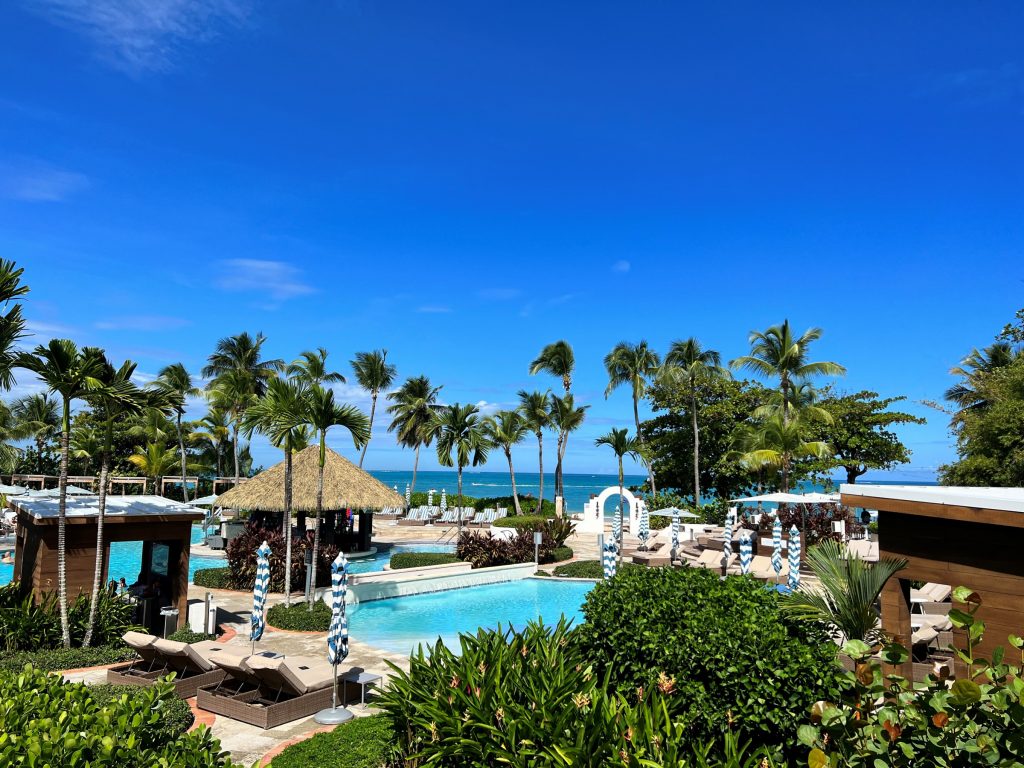In this blog authored by Save the Sound’s environmental justice specialist Alex Rodriguez, Alex provides insights into the island nation of Puerto Rico’s historic electric grid issues, as well as insights into what the island is doing to advance energy justice. Energy justice as a principle aims to make energy accessible, affordable, clean, and democratically managed for all communities.

Embracing energy justice-focused actions can help government support economic relief and sustainability for the people. Five years ago, Hurricane Maria struck Puerto Rico, and one year ago, Hurricane Fiona delivered another blow. Hurricane Maria, in particular, left the island with significant flooding issues and at least 80% of its energy grid damaged, leaving thousands of people deceased and over a million without access to clean water and electricity.
Today Puerto Rico is embracing energy justice to serve its people through infrastructural improvements better than ever before.
For a long time, the island’s power grid has been so vulnerable to storms because of fatal design flaws. Many power stations were originally sited on the south side of the island, which are frequently at risk of being knocked offline by destructive hurricanes or earthquakes. The energy generated travels along a network of 32,000 high and low voltage lines that move the power north, where 70% of residents live, and throughout the island. If one power pole is damaged, it can knock out power to large parts of the island.
Before Hurricane Maria, the grid had many issues due to a lack of maintenance. Puerto Ricans suffered severe outages at rates 4-5 times higher than average U.S. utility customers. After Maria, the U.S. government invested $13 billion to repair and rebuild the grid, and a private company, Luma Energy, was chosen to replace a public corporation, Puerto Rico Electric Power Authority (PREPA), to manage and improve the island’s electric grid.

In early November, I attended the Solar & Energy Storage Association’s (SESA) annual summit in San Juan, Puerto Rico with Sergio Carrillo, managing director of incentive programs at the Connecticut Green Bank and Jayson Velazquez, climate and energy justice policy associate at Acadia Center. Our goal: to network with locally based solar contractors and learn what policies and initiatives can support Connecticut’s economic development, stabilize the grid, and encourage increased deployment of solar and battery storage programs.
Here are some of my energy justice takeaways from the summit:
- It is important for energy providers to maintain effective services to utility customers, otherwise a new provider may be chosen. Residents’ perception of Luma Energy as an energy provider is mixed. Many are not pleased with the seven rate increases they were charged in 2022; however, they generally acknowledge the grid is improving and there are fewer blackouts thanks to on-the-ground repair efforts and new laws mandating investments in workforce development, grid modernization, and renewable energy and battery storage.

- Conservation and renewable energy policies should be bipartisan, and are mostly supported as such in Puerto Rico. Government leaders acknowledge that the island’s fossil fuel dependent power grid is aging and that they need energy independence to ensure healthy and economically stable livelihoods for residents.
- The future is now: shoot for the future you and your neighbors deserve in your advocacy efforts. Similar to Connecticut and New York, Puerto Rico has innovative plans to modernize its grid and propel itself into a new era of clean and renewable energy. One specific policy Puerto Rico has in statute is the Puerto Rico Energy Policy Act, which requires the island generate 100% renewable energy by 2050!

- Home solar and battery services save lives. Puerto Rico’s largest residential solar company, Sunrun, has provided over 50,000 home solar and battery power systems to the island. This has helped provide electricity to residents when the island’s central power system goes dark, and this is critical to saving the lives of disabled and elderly persons who rely on electricity at all times.
- Community-based data collection can inform decision-makers of where to prioritize on-the-ground actions to confront issues. Tracking where blackouts occur frequently via a cellphone app called Urbital has allowed residents to inform Puerto Rico’s Energy Bureau and Luma Energy of how to map and where to prioritize on-the-ground grid repair and modernization efforts.
Our pursuit of a fully renewable energy economy must lift up communities that have been left behind, and make sure those who have suffered the most are the first to benefit. To my fellow policy advocates, may we all follow Puerto Rico’s example and prioritize energy justice in our work!

